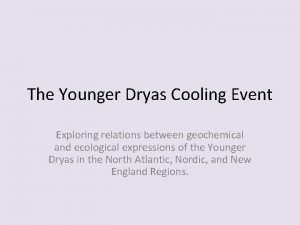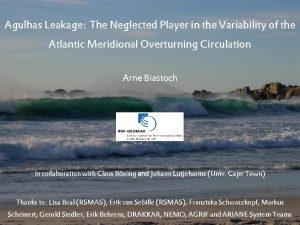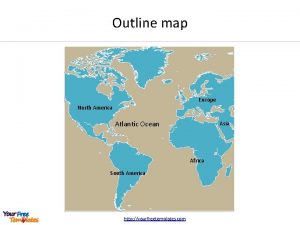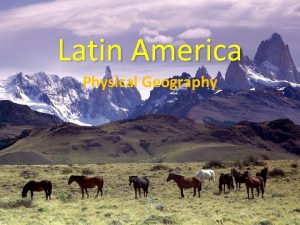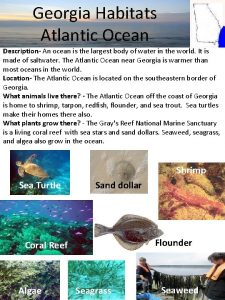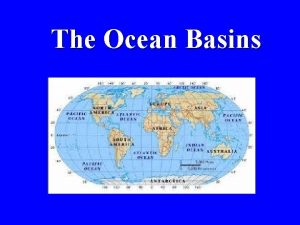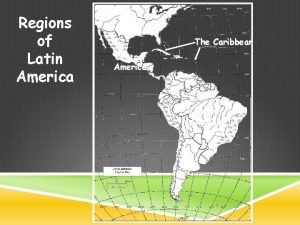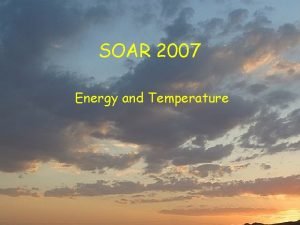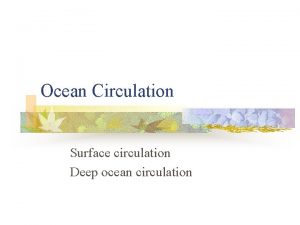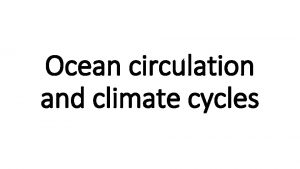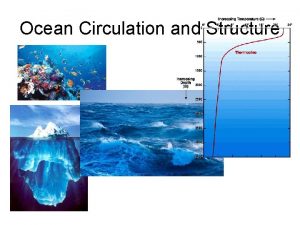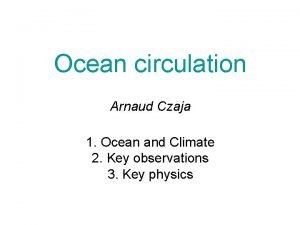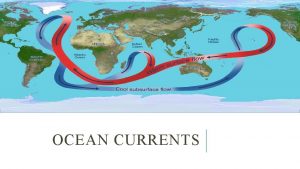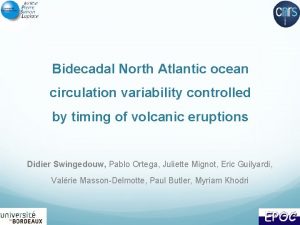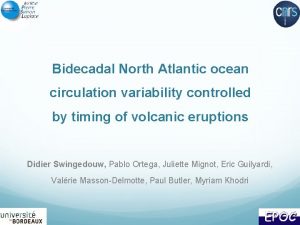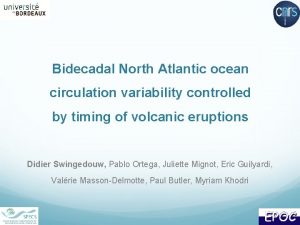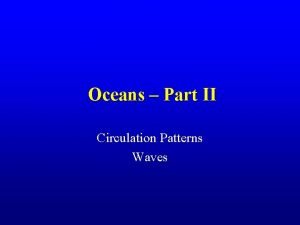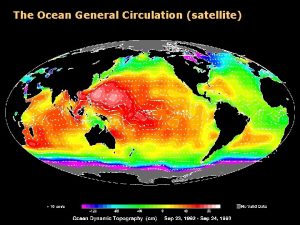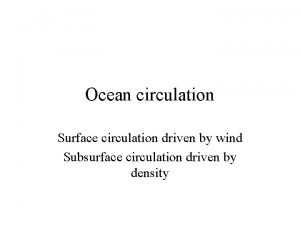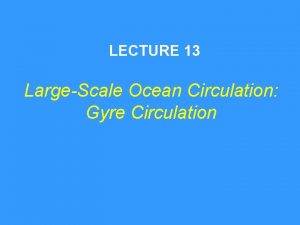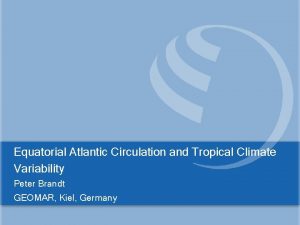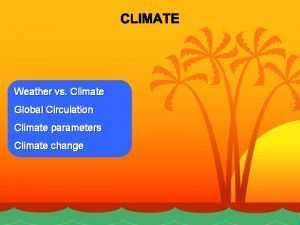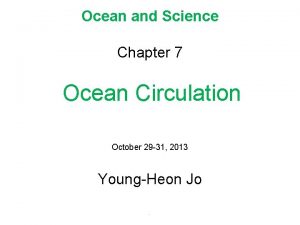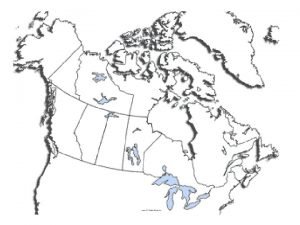Atlantic Ocean Circulation and Climate The Current View










![Foraminiferal Calcite Ca. CO 3 [Ca, Mg, Cd, Zn] [16 O, 18 O] [12 Foraminiferal Calcite Ca. CO 3 [Ca, Mg, Cd, Zn] [16 O, 18 O] [12](https://slidetodoc.com/presentation_image_h/0f3c86ccc8c844f5a419999660453b0e/image-11.jpg)





























- Slides: 40

Atlantic Ocean Circulation and Climate: The Current View from the Geological Record William Curry Woods Hole Oceanographic Institution AGU Fall Meeting December 13, 2006

-30 o C -45 o C

Large Scale Ocean Circulation

Modern Atlantic Circulation

The Atlantic Heat Pump

An Alternative Circulation

Temperature Response • Strong cooling in North Atlantic • Warming everywhere else • No net global change Manabe and Stouffer, 1997

21, 000 y. BP -30 o C -45 o C

Coring systems

Planktonic foraminifera Benthic foraminifera
![Foraminiferal Calcite Ca CO 3 Ca Mg Cd Zn 16 O 18 O 12 Foraminiferal Calcite Ca. CO 3 [Ca, Mg, Cd, Zn] [16 O, 18 O] [12](https://slidetodoc.com/presentation_image_h/0f3c86ccc8c844f5a419999660453b0e/image-11.jpg)
Foraminiferal Calcite Ca. CO 3 [Ca, Mg, Cd, Zn] [16 O, 18 O] [12 C, 13 C, 14 C]

How do you use the fossil chemistry to reconstruct ocean circulation? • Mapping the spatial patterns of key nutrient tracers (d 13 C) to identify water mass position and geometry • Using the T-S sensitive tracers (d 18 O) to reconstruct ocean boundary density gradients

NADW GEOSECS

NADW Kroopnick (1985)

Foraminiferal chemistry is controlled by the chemistry of the overlying water Ca 13 CO 3 ~ S 13 CO 2

Core distribution 21, 000 year old sample identified at each location Compiled from many sources

Paleo “GEOSECS” Transect Curry and Oppo (2005) – compiled from many sources

Curry and Oppo (2005)

Curry and Oppo (2005)

Section at 30 o N

Section at 30 o S No data

Summary of the Glacial Water Mass Geometry • Core of North Atlantic Deep Water shoaled from 2500 to 1500 m • Significantly greater Antarctic Bottom Water flowing north into the North Atlantic basin, influencing water as shallow as 2000 m • Low d 13 C values found significantly shallower along the eastern margins – more southern ocean water or enhanced remineralization • The water mass geometry is confirmed by other proxy data like Cd/Ca and D 14 C

Temperature and Salinity Characteristics of the Glacial Deep Waters Reconstructions of past salinity and d 18 Ow from pore water profiles in the deep Atlantic

What were the water mass physical properties like? Pore Water profiles of salinity and d 18 O of sea water provide clues to the glacial water masses Adkins et al. (2002)

Antarctic Bottom Water was >1 psu saltier than North Atlantic Deep Water Antarctic Bottom Water was ~0. 5 per mil higher in d 18 Ow Both are opposite the modern gradients Adkins et al. (2002)

Change in Salinity > 1 psu

Dd 18 O anomaly at 30 o S No data

How did the rate of circulation change? Ocean margin density gradients and the Geostrophic Method

Large Scale Ocean Circulation

South Atlantic Circulation Lynch-Stieglitz et al. (2006)

Determining past sea water density Sea water r~ f (T, S) Foraminiferal Ca. CO 3 d 18 OCa. CO 3 ~ f (T, d 18 Owater) and d 18 Owater ~ S

Density st Density and d 18 O Lynch-Stieglitz et al. (1999)

Density at 30 o S South America Africa

South America Africa Lynch-Stieglitz et al. (2006)

Using an Inverse model The modern circulation can produce these density gradients but to accomplish this……. . the temperature and salinity characteristics of the South Atlantic water masses must have been very different. Gebbie and Huybers (2006)

Or maybe the northward transport in the upper limb of the overturning circulation really was reduced…… • Consistent with a density gradient reduction across the Florida Straits (Lynch-Stieglitz et al. , 1999) Holocene Glacial Transport

Or maybe the northward transport in the upper limb of the overturning circulation really was reduced…… • Consistent with a reduction in the export of 231 Pa from the North Atlantic (Mc. Manus et al. , 2004) GISP 2 NADW on H 1 YD 0. 093 NADW off Bermuda Rise

What can we say about the glacial Atlantic Ocean circulation? Nutrient proxies depict the changes in geometry and position of the major water masses: • NADW reduced in total volume, shoaled by about 1000 m and southward penetration significantly reduced • AABW increased in total volume, influenced the water properties as shallow as 2000 m and penetrated much farther into the North Atlantic

What can we say about the glacial Atlantic Ocean circulation? Pore water profiles constrain the salinity gradients in the deep Atlantic Ocean: • AABW was 1 psu higher in salinity than NADW, opposite the gradient observed in the modern ocean • A large d 18 O anomaly in the deep Atlantic is associated with this change in hydrography

What can we say about the glacial Atlantic Ocean circulation? Ocean margin density gradients reflect changes in the mass transport: • The net northward transport in upper limb of the Atlantic Overturning Circulation was reduced or • Thermocline salinities and temperatures were very different on either side of the South Atlantic
 Slowing atlantic ocean circulation
Slowing atlantic ocean circulation Single circulation and double circulation
Single circulation and double circulation Single circulation and double circulation
Single circulation and double circulation Lung airway anatomy
Lung airway anatomy Atlantic meridional overturning circulation
Atlantic meridional overturning circulation Atlantic meridional overturning circulation
Atlantic meridional overturning circulation The atlantic ocean gets about 3-5 ______ wider each year.
The atlantic ocean gets about 3-5 ______ wider each year. Atlantic ocean map europe
Atlantic ocean map europe Physical geography of latin america
Physical geography of latin america Georgia atlantic ocean habitat
Georgia atlantic ocean habitat Amazonia azul
Amazonia azul What is another arm of the atlantic ocean cradled by mexico
What is another arm of the atlantic ocean cradled by mexico Planet q
Planet q What is another arm of the atlantic ocean cradled by mexico
What is another arm of the atlantic ocean cradled by mexico Why did the puritans cross the atlantic ocean
Why did the puritans cross the atlantic ocean Ocean atmosphere and climate
Ocean atmosphere and climate Ocean atmosphere and climate
Ocean atmosphere and climate Nekton include all animals that
Nekton include all animals that Climate change 2014 mitigation of climate change
Climate change 2014 mitigation of climate change Brainpop climate types
Brainpop climate types Convergent transform
Convergent transform Ocean ocean convergent boundary
Ocean ocean convergent boundary Convergent plate boundaries
Convergent plate boundaries Ocean ocean convergent boundary
Ocean ocean convergent boundary Ocean to ocean convergent boundary
Ocean to ocean convergent boundary Ocean to ocean convergent boundary
Ocean to ocean convergent boundary Red and blue ocean strategy
Red and blue ocean strategy Line current and phase current
Line current and phase current Phase to phase voltage
Phase to phase voltage Energy band diagram of pnp transistor
Energy band diagram of pnp transistor Ac theory 3 lesson 4
Ac theory 3 lesson 4 Drift current
Drift current Intrinsic semiconductor
Intrinsic semiconductor In a triangle connected source feeding a y connected load
In a triangle connected source feeding a y connected load Holding current and latching current
Holding current and latching current Drift current density unit
Drift current density unit Message in a bottle ocean current activity
Message in a bottle ocean current activity Ocean current
Ocean current Ocean current
Ocean current Gm formula for mosfet
Gm formula for mosfet Why must the electrode holder be correctly sized?
Why must the electrode holder be correctly sized?




